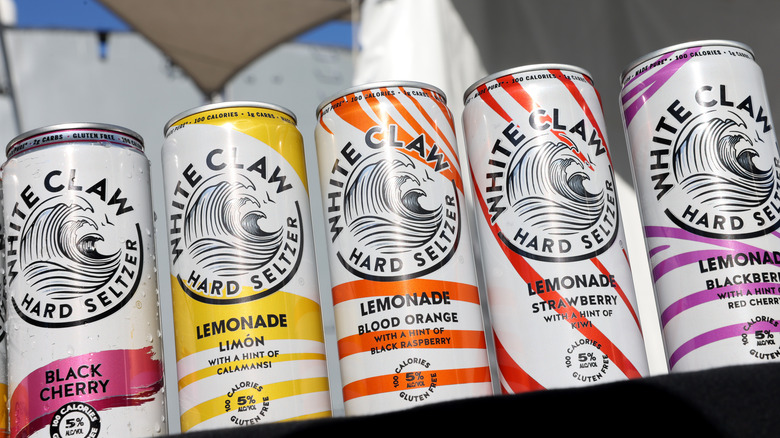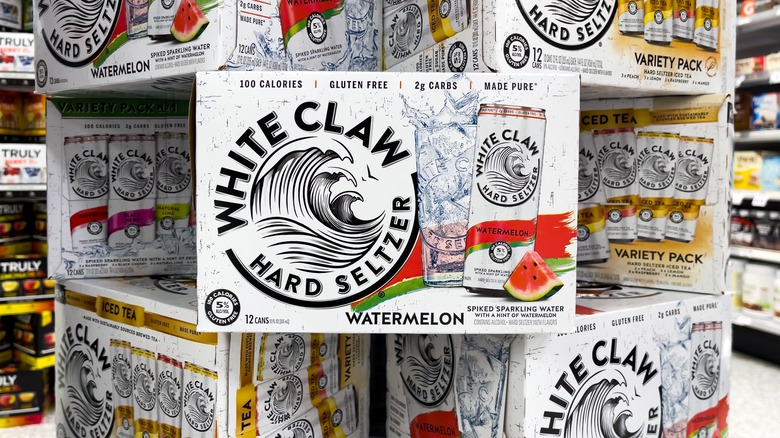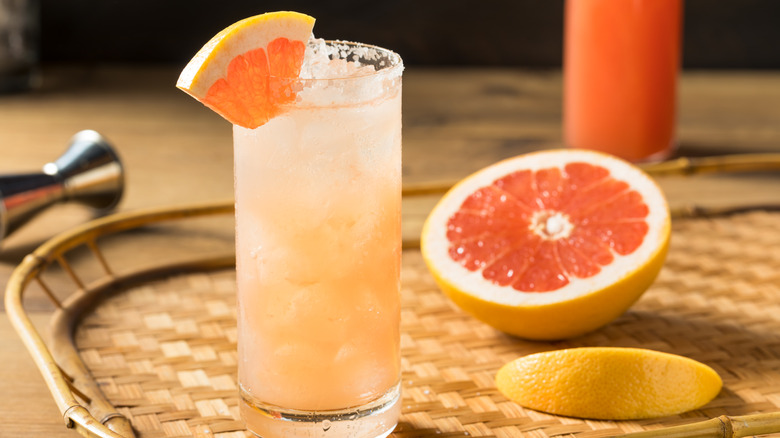Here's What Kind Of Alcohol Is Used In White Claw
It's hard to imagine anyone who hasn't at least heard of White Claw hard seltzer. The drink's wild popularity has taken both bars and the internet by storm, with the former having a hard time keeping the stuff in stock thanks to the latter's enthusiastic celebration of the beverage.
The now iconic white can of White Claw provides a lot of information for drinkers. It tells you the calorie, carbs and alcohol contents, the flavor you can find inside (a range of which includes everything from black cherry to pineapple to watermelon), as well as informative details, like the fact that it's gluten-free. There are also more vague statements, like declarations that it is "spiked" and "made pure."
What it doesn't tell you, though, is what kind of alcohol is contained inside. There is some debate over what that boozy base is, with speculation over whether it's vodka or another neutral grain alcohol. The real answer though, is that it's actually not a spirit-infused drink at all, but a member of the malt beverage category.
Malt meanings
You may have wondered, what is malt liquor, and is it related to beer? In a way, it is, thanks to that integral ingredient. Malt is a word that can refer to a range of products, from a powder you put in your favorite milkshake to the actual grains that have been "malted" — a process that helps coax out natural sugars critical to fermentation and the creation of alcohol. Beer relies on that malt product, which often means barley — but can also be applied to rice, corn, or other cereals used in the process.
With White Claw, the type of grain is more vague beyond the fact that it is of a gluten-free nature, but, like beer, those grains provide the source of sugar for the conversion into alcohol. In this case, the gluten-free grain is fermented, then flavored and carbonated, resulting in the "hard seltzer" product.
This is the case in the U.S., however, should you be traveling to America's hat, Canadian White Claw is manufactured in two formats. One boasts the malt base, while another — found only in Quebec — is actually produced with vodka.
Variations on the White Claw classics
The benefit of this kind of booze is that it is relatively neutral and allows those fruity flavors to shine, and the popularity of White Claw has also inspired many drinkers to riff on these cans, finding them to be an ideal canvas for their alcoholic experiment. Take, for example, the White Claw slushies that are here to spice up at-home happy hour.
Other imbibers aren't quite satisfied with the level of alcohol found in their can, and instead have created their own booze-boosted cocktails, adding gin to a lime White Claw, or rum, curaçao, and fruit juices to a watermelon White Claw for a tropical spin. You can even swap out the standard seltzer for a White Claw flavor in a classic sparkling Paloma cocktail recipe.
The company has upped the alcohol ante, too, with variations like the Surge line, which bring a bit more booze to the party (8% upped from the 5% of the classic), and now even offers flavored vodkas which you can use to create a "Superclaw" — or a classic White Claw spiked with the brand's new spirit. In this case, you have a blend of the malt beverage with the stronger spirit, and the ability to mix and match flavors for your own creative cocktail endeavors. However you decide to drink your Claw, now you know what gives your seltzer its alcoholic edge.


